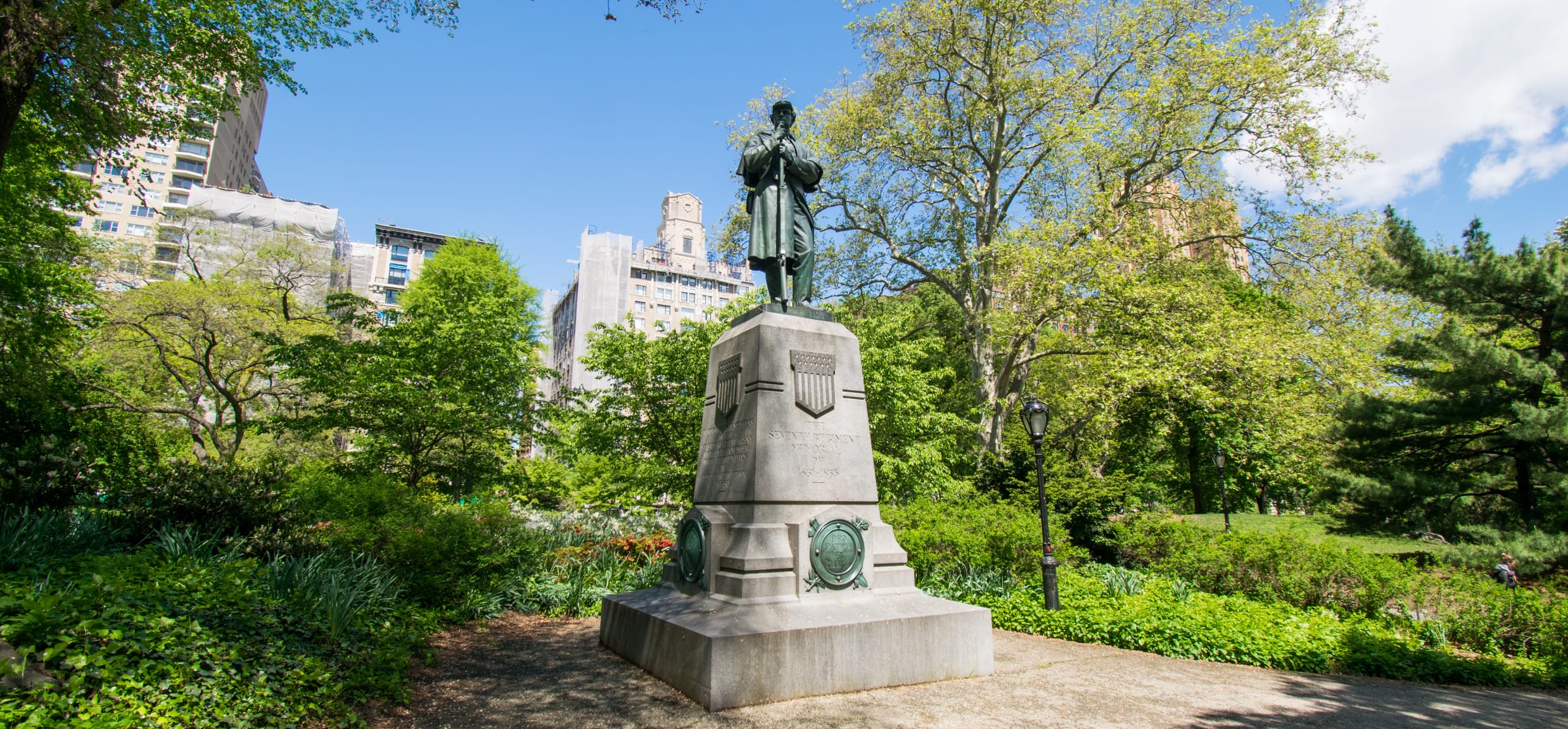7th Regiment Memorial

Along the West Drive, just north of the Sheep Meadow, is a memorial to the soldiers of New York’s Seventh Regiment who died in the Civil War. The bronze statue of a Union Army soldier at ease, resting against his upright musket, stands on a granite pedestal.
The monument honors the 58 casualties of the Seventh Regiment, who were among the first to respond to President Lincoln's call for volunteers. It was dedicated in the Park in 1874.
The Seventh Regiment proposed a monument to their fallen members to the Park’s Board of Commissioners in 1867, as part of a wave of planning memorials following the war. However, the Park’s administrators were hesitant to accept it because they believed that commemorating the dead in a Park primarily intended for pleasure and recreation was not appropriate. In response to these concerns, the Regiment promised that their memorial would not take a mournful form.
The original proposal consisted of a bronze figure of a soldier atop a monumental pedestal with stairs and additional bronze sculptural elements to be located appropriately at Warriors’ Gate, at Central Park North and Seventh Avenue. The Park’s commissioners deemed this too elaborate and a simpler design at a location along the Drive was chosen instead.
The renowned American artist John Quincy Adams Ward made the figure of the soldier and the architect Richard Morris Hunt designed the pedestal. Although Ward modeled the figure after a real member of the Regiment, it does not represent a specific individual but rather all those who volunteered. For this reason, it also known as the “citizen soldier.” The soldier is neither heroic or tragic, but watchful and stoic.
Ward has three other sculptures in Central Park, The Pilgrim, Indian Hunter, and William Shakespeare. Just across the Park is another monument to the Seventh Regiment, the 107th Infantry Memorial, which honors soldiers who died during World War I.

